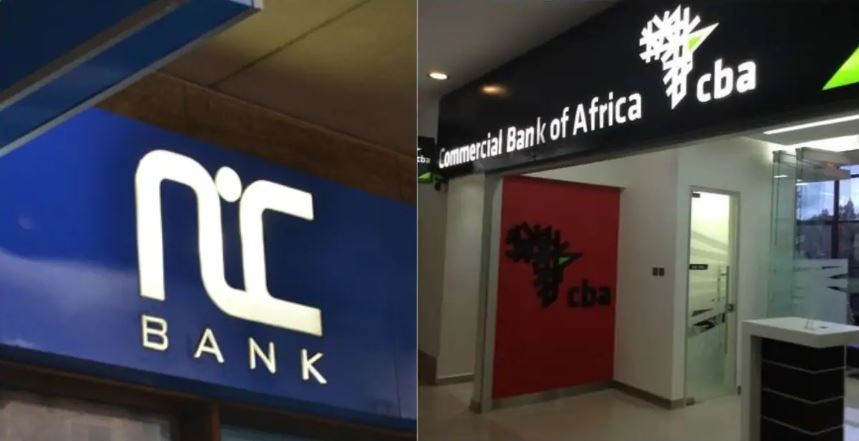The Commercial Bank of Africa and NIC Bank are set to begin operations as one entity, effective 1st October.
Following their merger approval by the Central Bank of Kenya (CBK) and National Treasury which was published in the Kenya Gazette of Friday 27th September 2019, the amalgamation of the two banks took effect on Monday 30th September 2019.
In a statement, both NIC and CBA confirmed that they have begun operations as one NCBA Group PLC.
“Following these approvals, effective 1st October 2019, all subsidiaries of NIC and CBA will operate under a Non-Operating Holding Company, NCBA Group PLC. The banking business in Kenya of the merged institutions will operate as NCBA Bank of Kenya PLC,” the statement read in part.
The CBK had earlier said that the merger will strengthen both institutions leveraging on their combined market share of 9.9% and customer base of over 40 million in four East African countries.
Data from CBK shows that CBA had about 21.5 million deposit accounts in the period ending September 2018, compared to NIC’s 116,000 accounts during the same period.
CBA has a market share of 5.6% and also has banking and non-banking subsidiaries in Kenya, Uganda, Tanzania, and Rwanda while NIC has 4.3% market share and a presence in Kenya, Uganda and Tanzania.
The two banks started discussions of a possible merger in December 2018. They concluded that in the event of a merger, the 34 owners of CBA will own 53% of the merged company while existing NIC Group shareholders will own 47% of the company. The new entity was initially to be referred to as NIC Group but the two later agreed on NCBA Group PLC.
Global Credit Ratings (GCR) recently cautioned that despite long-term benefits expected from the merger, operational and technical risks of combining two banking systems, funding structures and cultures may slow earnings for several years. the two banks have been fairly profitable.
CBA’s nine-month profits to September 2018 fell 16% to Ksh3.36 billion while that of NIC dropped by 3.2% to Sh3.3 billion.
“We also anticipate the long-term integration costs to be material, causing a drag on earnings for a two- to three-year period, limiting the positive effect of the merger,” said GRC in separate ratings on the two entities.
Analysts predict that the banking sector is set to witness similar transactions as more banks consolidate.












Leave a comment